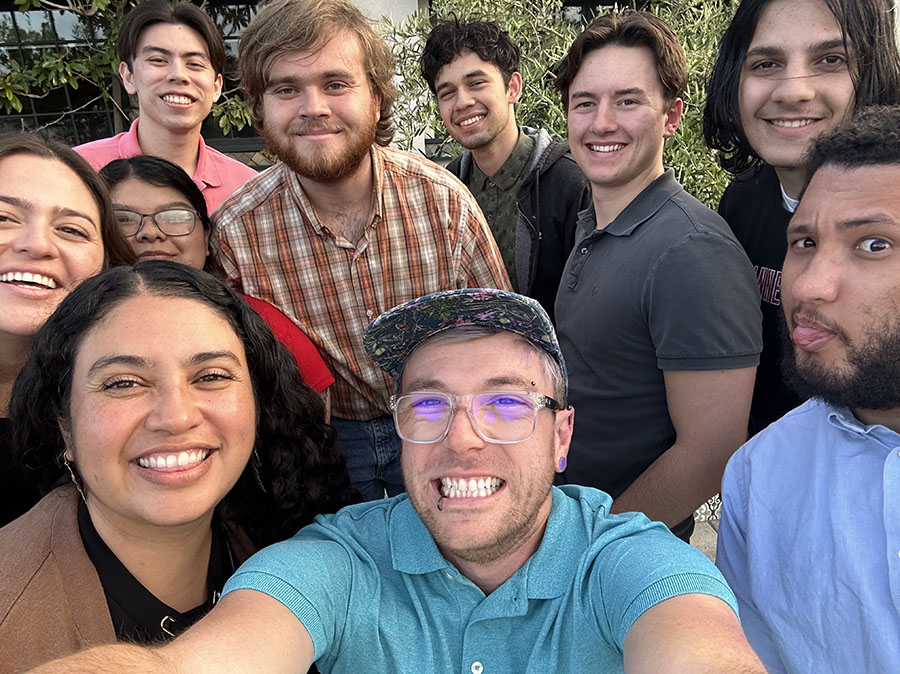
June 6, 2023 - Faculty and students from four CSU Channel Islands (CSUCI) academic programs are working together on a research project that has been awarded $80,000 by NASA.
Faculty and 10 students from CSUCI’s Mathematics, Physics, Computer Science and Chemistry/Biochemistry programs are involved in the research project, which is aimed at developing a way to predict how quickly various metal structures corrode in different environments.
“This is one giant project broken down into smaller projects,” explained Associate Professor of Mathematics Cynthia Flores, who is leading the project. “Essentially, we’d be able to render simulations with different metals and different designs to predict how they well they would withstand various atmospheric pressures and conditions before they start to degrade and corrode.”
A predictive model like this would be a huge money saver for NASA, for example, as scientists wouldn’t have to buy the metals and perform the necessary experiments to determine how well specific aerospace materials would fare in different situations, Flores explained. Applied Physics major Trent Ruiz, who led the student research team, explained that the predictive model could be useful under water, too.
“Corrosion plays a big role in our infrastructure,” Ruiz explained. “Especially in our underwater pipelines. Once you put steel in an electrolytic (like saltwater) solution, it corrodes like crazy. Our models will be able to predict where corrosion is going to happen.”
CSUCI was one of just eight universities awarded grant money from the 2023 national competition, which was called the University Student Research Challenge (USRC). The competition challenged students from universities and colleges around the nation to come up with ideas and concepts relevant to NASA Aeronautics.
NASA would provide the best ideas with grant money to continue their research. The CSUCI project received the highest amount allowed—$80,000— and students are now challenged to raise 10 percent of the total—$8,000—through a crowdfunding campaign.
“This effort is intended to act as a teaching accelerator, requiring students to exercise some entrepreneurial initiative that also will raise public awareness about their research,” the NASA website reads.
The formal name of the project is: Advancing Aerospace Materials Design through High-Fidelity Computational Peridynamic Modeling and Modified SVET Validation of Corrosion Damage. (SVET is the abbreviation for “scanning vibrating electrode technique” which is a type of microscope that can visualize electrochemical processes.)
Mathematics and Computer Science students and faculty worked on part one and two of the project with Physics and Biochemistry working on parts three and four, Flores said. Simply put, part one and two involve creating a piece of mathematical software called a “solver,” which is designed to predict corrosion. Parts three and four will be physical testing of the equation using augmented reality glasses and simulation.
“We will write down the solver and render the results with artificial reality,” Flores explained. “With artificial reality, we basically create an experiment using the same shape as the metal you are testing. With augmented reality glasses, it will look like a piece of metal corroding in front of you. What we see in the glasses will match what happens in reality.”
If you’d like to support the project, the crowdfunding campaign is live and includes research updates and a podcast. Visit: https://crackingmathpodcast.com/.
